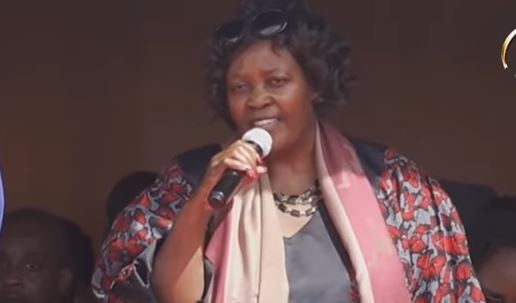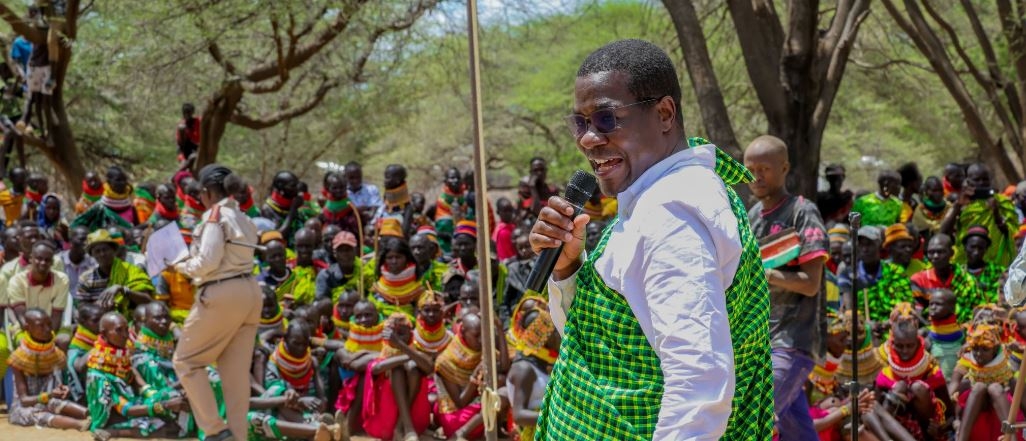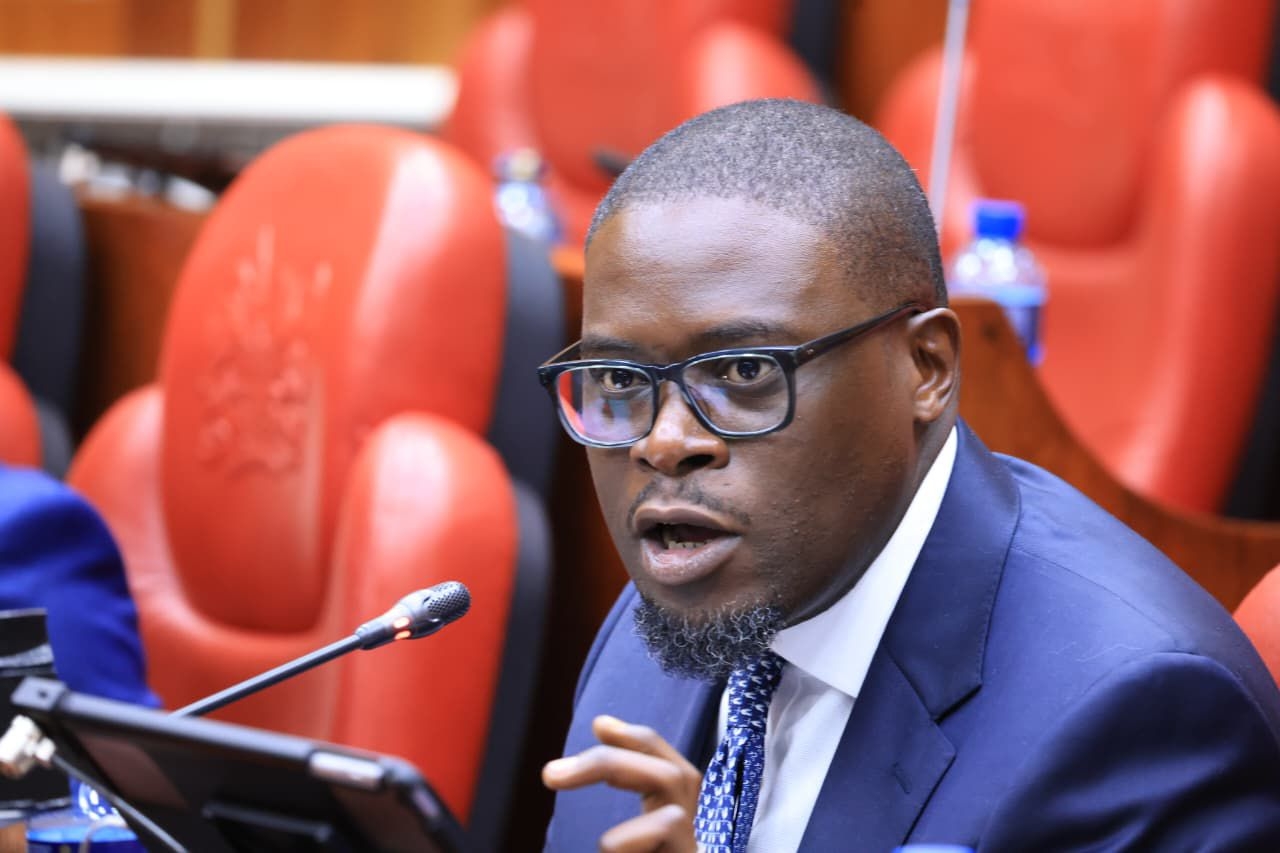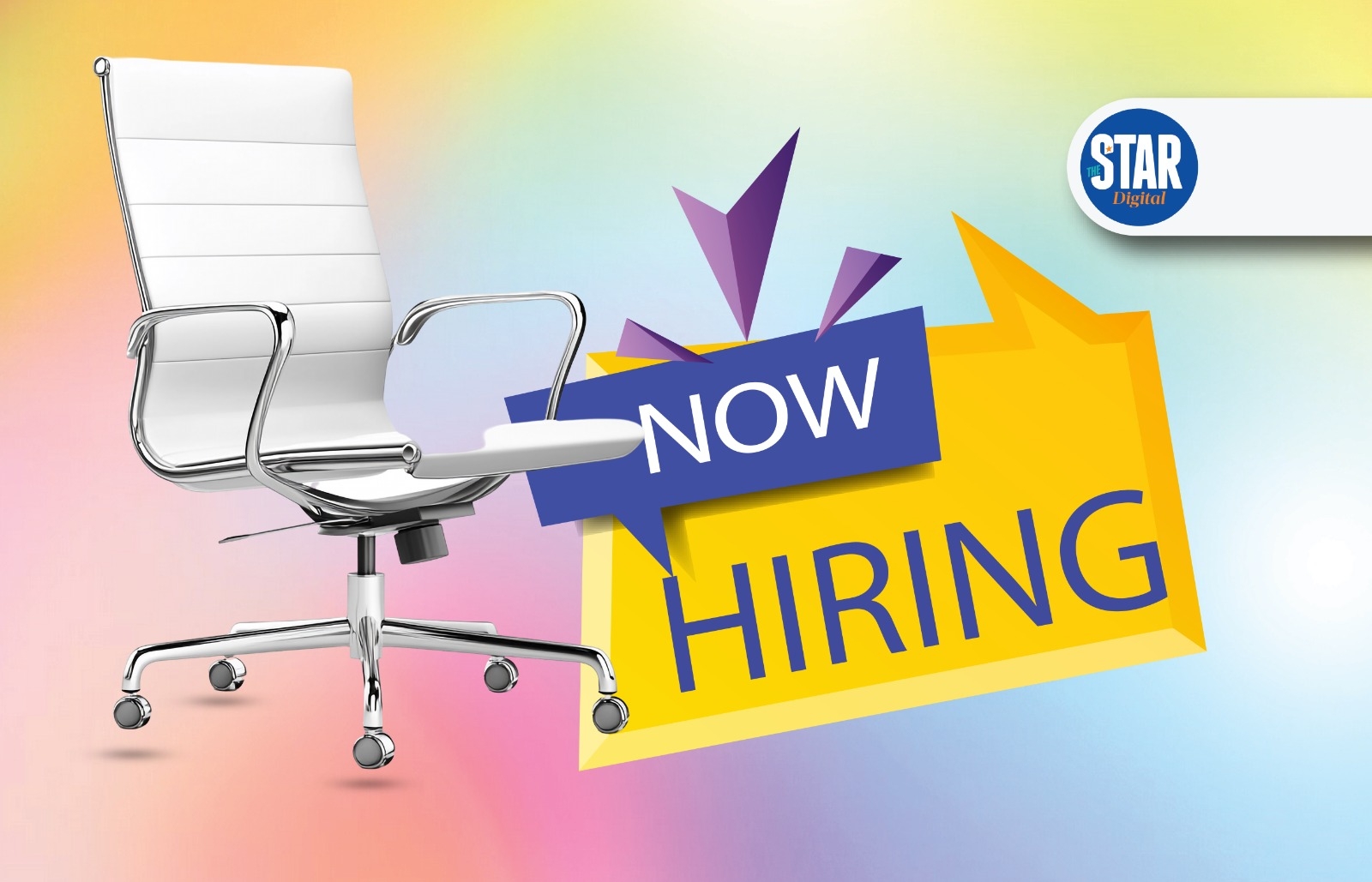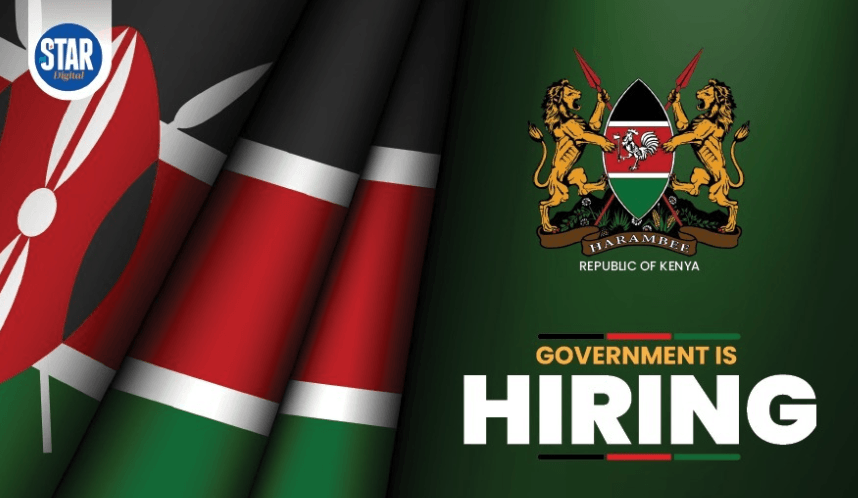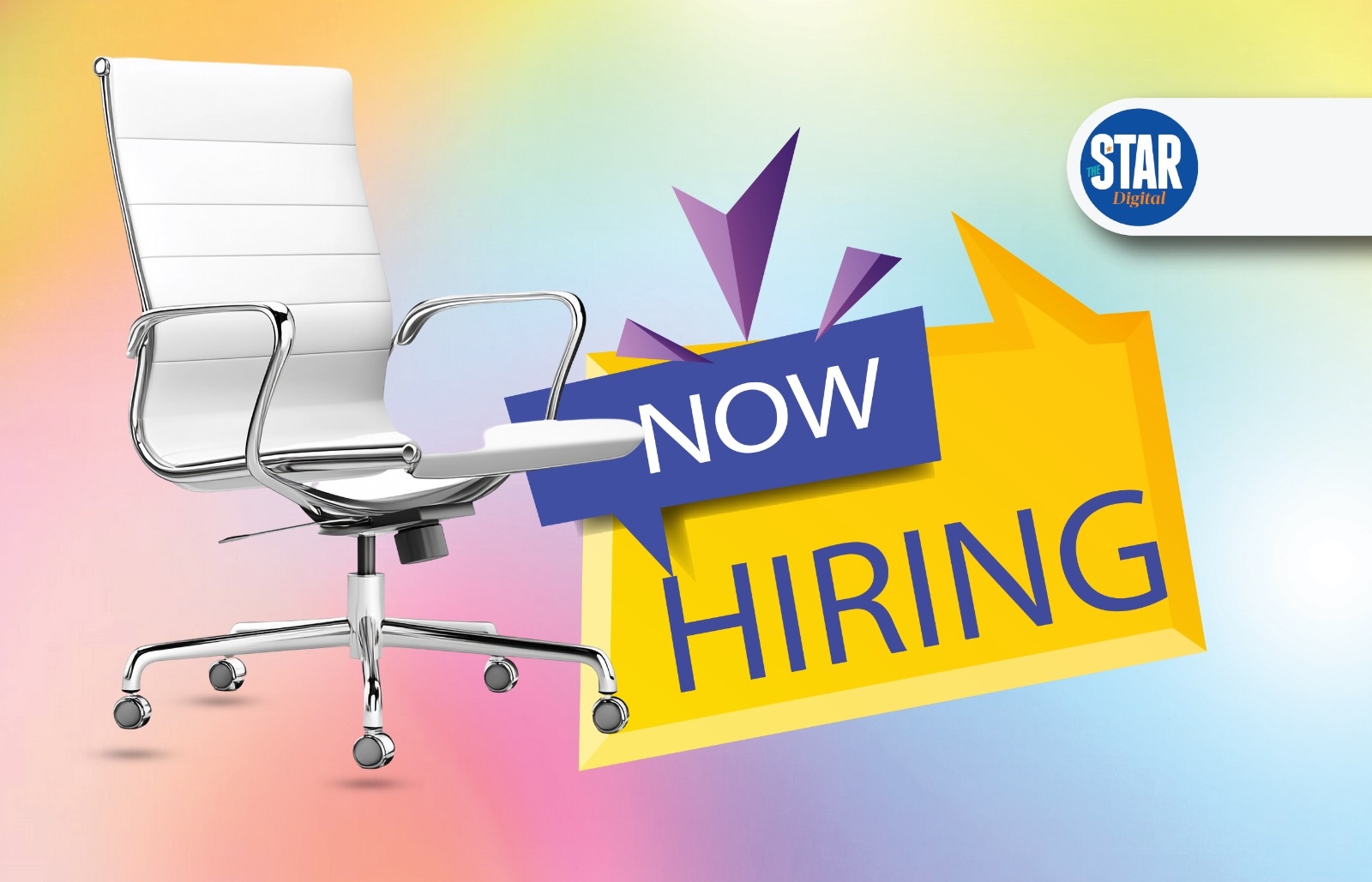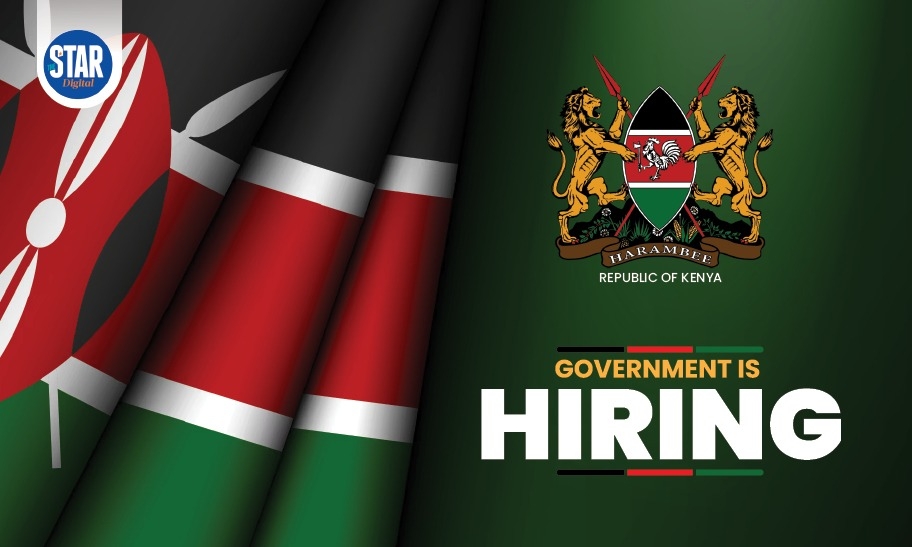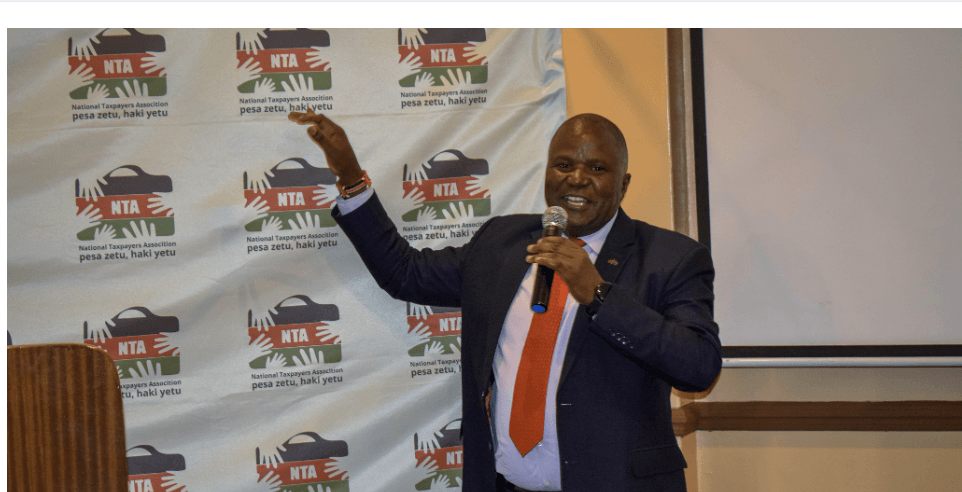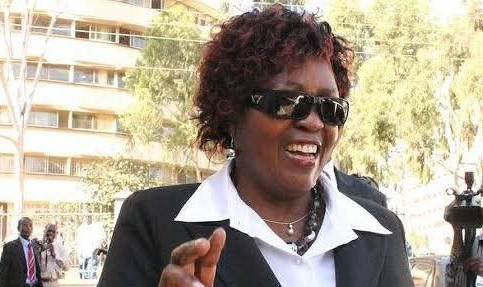In a world where adversity often shapes destinies, the story of Charity Chigulu stands as a beacon of unwavering determination.
Once a voice on the airwaves, she navigated the waves of adversity with unwavering determination.
Charity began her career as a news reader for Radio Jambo in 2015.
However, her journey took an unexpected turn in 2017, when she started experiencing vision problems.
“I started experiencing difficulties in seeing. You know the way you look at a bulb that is lighted on then you see like there’s a ring around it? I could see that but I concluded maybe my senses have become weak.”
Seeking help, Charity consulted an ophthalmologist, who prescribed new glasses, significantly enhancing her vision.
Find the PODCAST HERE
An ophthalmologist, specialises in eye and vision care, diagnosing and treating various eye conditions.
Later that year, Charity spent her annual leave in Mombasa, where her ex-husband resided, and she faced challenges leaving the house independently, noting blurred vision reminiscent of smoky or foggy surroundings.
“I once stepped out and it had rained, I was just walking on water without noticing. And people would laugh at me. I felt intimidated, so if I needed to go somewhere, he would drop me and later pick me up,” Charity says.
Her ex-husband advised her to see an eye specialist in Mombasa before she returned to Nairobi.
It is then that the eye specialist informed her that she had an eye condition called glaucoma.
CAUSES AND TYPES
Ophthalmologist and glaucoma specialist Dr Daniel Kiage from Innovation Eye Centre Kisii defines glaucoma as a group of eye conditions that damage the optic nerve.
This is typically due to an increase in intraocular pressure (high pressure within the eye).
When the nerve gets damaged, a person starts losing vision.
A normal range for eye pressure is typically between 10 and 20 millimetres of mercury.
Some individuals may develop glaucoma even with pressures within this range, however, Kiage says.
There are different types of glaucoma. Closed-angle glaucoma occurs when the fluid is suddenly blocked and cannot flow out of the eye. This causes a quick, severe rise in eye pressure.
Open-angle glaucoma tends to run in families. A person is at higher risk if they have a parent or grandparent with open-angle glaucoma.
People of African descent are also at higher risk of this disease.
Both closed- and open-angle glaucoma are common in adults.
Juvenile glaucoma often comes when people are teenagers. Congenital glaucoma is one where people are born with it.
“The most common in our setup is the adult type, which is open-angle glaucoma, and is much more common in Africa than other parts of the world,” Dr Kiage says.
“We really don’t know why, but we think it’s genetics, because even black Americans have glaucoma more than the white Americans.”
It is easier to diagnose congenital glaucoma because the child’s eyes tear frequently, and the black part of their eye looks a bit grey. The eyes start becoming large and they become photophobic.
Secondary glaucoma is a type of glaucoma that occurs as a result of another eye condition or underlying medical condition such as trauma, inflammation, diabetes or certain medications.
Other eye diseases that can lead to irreversible blindness if left untreated include diabetic retinopathy, retinitis pigmentosa, retinal detachment, optic neuritis, cataracts, retinoblastoma, uveitis, and hereditary optic neuropathies.
The rate of glaucoma is about 5 in every 100 people who are aged over 40. Whereas in whites it is 1.4 in a 100 people of the similar age group.
Unfortunately, glaucoma is difficult to diagnose and treat in Africans because it starts at an early age; and also because of social economic status, it tends to be diagnosed late.
“The problem with glaucoma is that it doesn’t pain, so you can be having very advanced glaucoma and you not aware,” Kiage says.
“And you lose vision from the side. Meaning you can be seeing very far and you often don’t realise that you can’t see the sides. And it’s because it comes very slowly, that’s why it’s called sneak thief of vision.”
Once a nerve has been damaged to a certain percentage, there’s nothing under the sun that can repair it. The goal of treatment is to prevent further damage to the remaining sight.
HOW CHARITY FARED
Charity learned from the eye specialist that the disease had impacted her optic nerves, leaving only a small percentage intact.
“I told the doctor no, it can’t be. So I inquired more about the disease. He said it runs through the family, and he asked if we had anyone with the condition,” she said.
“I said no one is blind in our family, even though most of my family members wear glasses.”
The doctor prescribed her eye drops to help protect the remaining optic nerves and referred her to another specialist at Nairobi Hospital.
Dr Kiage said it is very advantageous if the condition is discovered early, because if it’s discovered when a person has lost 20 per cent, then they can preserve 80 per cent. But if discovered when they have lost 80 per cent, only 20 per cent can be preserved.
The only treatment for glaucoma is slowing down the progression.
Kiage has advised people wearing spectacles to change their glasses where their eye pressure can be checked.
Due to denial, Charity visited a different hospital and asked them to check her properly.
There, she met a harsh doctor, who told her her case is desperate and advised her to see a glaucoma specialist.
“I saw Dr Sheila Mako, a glaucoma specialist at Agha Kan Hospital. She is the one who handled me and told me not to worry,” Charity said.
“She was positive but maintained that my sight is bad. She advised me to continue using the drops, they will help in bits.”
Dr Mako recommended her to go to Kenya Society for the Blind to be trained on how to use a white cane.
“I stepped out of that hospital and called my boss Susan [Kimachia]. I told her I am never coming back to that hospital again. How can she ask me to go to Kenya Society for the Blind. Am I blind?” Charity said.
“Susan she asked me to go to the office, where we sat down and spoke.”
It here that Kimachia told her they should tell the management what is happening, a move Charity declined to take, fearing she would lose her job.
But on the third week after the sit-down with Susan, she was called by HR and she knew it was the end of her working at the media house.
“The HR together with Susan sat me down, and I now narrated what was happening,” she said.
“I told HR I have been directed to go to the Kenya Society for the Blind for counselling, rehabilitation and also so that I am able to go on with my work.”
Charity says Radio Africa Group paid for her rehabilitation and she started going to school.
I told myself, Charity, you are not a cabbage, you cannot be. My brain and hands are not blind. i also had my voice, which I consider my weapon
UNDERGOING REHAB
Johannah Mweu, the academic registrar at the Kenya Institute of Special Education (KISE), says rehabilitation is important for individuals who lose their sight, especially those experiencing vision loss in adulthood.
People acquiring the disability later in life face considerable challenges, as they are used to navigating their daily routines independently.
Mweu says rehabilitation can facilitate the reintegration of individuals into a visually impaired lifestyle, leveraging their other senses.
A pivotal component of this rehabilitation process entails adapting to alternative methods of reading, compensating for the loss of vision.
"They rely on alternative senses for reading, primarily tactile sensation through touch," he says.
"And when we talk of touch, at the beginning, it’s not very well developed, but after stimulation in terms of touching the braille dots, touching different textures and identifying things through different textures, then they are able to access information."
He further mentions that at KISE, aside from training educators, they have been providing rehabilitation services for Persons With Disabilities (PWDs) in various capacities, including visually impaired individuals.
This includes training in Braille, orientation and mobility, as well as activities of daily living, such as cooking, washing and dressing.
Additionally, they focus on developing other senses to compensate for the loss of vision.
It was an uphill task for Charity. She now had to learn again how to use a computer without using her sight.
What encouraged her was that she met other people who were blind and they had progressed.
“They counselled me first to understand that I was not alone, and there are people who have managed, so I also can,” she said.
“I was taught how to move around using the white cane. They embraced me and the teacher was very friendly.”
Sometimes, she would sit down and cry, wondering why it had to happen to her. But the support she got from family, work and at the Kenya Society for the Blind was positive.
What kept her going during the rehabilitation was the urge to prove that she could do it, and also because she didn’t want to lose her job and go back home since both of her parents had died.
“I told myself, Charity, you are not a cabbage, you cannot be. My brain and hands are not blind. i also had my voice, which I consider my weapon,” she said.
“I used to lead praise and worship at church before I lost my sight, and they didn’t tell me to step down, that also kept me going.”
The academic registrar at KISE says individuals with disabilities, particularly those with visual impairments, encounter uncertainty regarding their post-rehabilitation path.
The success of their transition hinges significantly on the reception they encounter thereafter.
Some workplaces or institutions, Mweu says, may opt not to reintegrate them due to a lack of comprehension or capacity to support them effectively.
BACK TO WORK
When Charity returned to work after six months of going to the Kenya Society for the Blind, Radio Africa Group bought her a laptop that had a feature called JAWS.
JAWS stands for "Job Access With Speech". It helps individuals with visual impairments to interact with computers by converting on-screen text into speech and providing other auditory cues.
This software is widely used in educational, professional and personal settings to enable blind and visually impaired users to navigate the digital world independently.
And since she could no longer read news on radio, she had to learn how to script news.
After perfecting the art of writing stories without seeing, Charity started writing health stories, particularly on glaucoma and other eye issues, to create awareness.
She finds satisfaction when a story she has impacts the life of a listener.
Despite the loss of her sight, Charity writes compelling health stories for radio audiences, especially on eye-related ailments.
She also contributes her insightful pieces to the Star newspaper.
Undeterred by her blindness, she has pursued interviews with senior figures in both governmental and non-governmental sectors, driven by an unyielding commitment to inform the public on pressing issues.
In 2013, Charity won Internews Best Inter-Community Relations Story, while in 2019, she was awarded the Most Resilient Journalist of the Year at Radio Africa Group.
Charity says she has gotten where she is right now in her career because she got the right assistive devices, which Radio Africa group paid for. Otherwise, if it were upon her to buy them, she wouldn’t have managed.
She says a white cane goes for about Sh5,400, which cannot be used for long because the roller is worn out and one has to replace it. Whereas a laptop with JAWS installed goes for more than Sh150,000.
Mweu from KISE says some senior special schools for the blind have already acquired a braille embosser, a device capable of producing braille materials.
A braille embosser functions as an impact printer, creating text in tactile braille cells.
With the assistance of braille translation software, documents or digital texts can be embossed efficiently.
Previously, procurement of such printers was unattainable for special schools due to their high cost.
“When we are talking of Sh2 million, Sh3 million, it is expensive,” Mweu says.
“And when that money reaches the schools, it would not find it prudent to buy an embosser for Sh3 million yet there are other smaller needs or resources for the school.
“The country doesn’t have enough resources for PWDs, but processing of materials being centralised at KISE, it will help a lot.”
Charity says it’s not like PWDs are not brilliant, but the opportunity to showcase their ability is not there; it’s limited because a person doesn’t have those assistive devices.
She urges employers to be accommodative and to offer assistive devices to PWDs to help them deliver.
Elmand Odero, assistant director of Special Needs Education at KICD, says they help to develop, review and refine its curriculum in alignment with the mainstream one.
Charity says the terrain in the country and most towns is not friendly to PWDs, which hinders their mobility. Meaning that if a PWD doesn’t have an aid, you cannot go anywhere.
She advocates for all elevators to be installed with an audio system to help the visually impaired know when they get to the floor they are going to.
She also calls for policies that make inclusivity be realised.
In a world often obscured by shadows, Charity has emerged as a beacon of inspiration, demonstrating that true vision transcends physical limitations.
Her stories serve as a reminder that the power to enlighten lies within each of us, waiting only to be unleashed.
This story has been produced by the Star in partnership with WAN IFRA Women in News Social Impact Reporting Initiative



